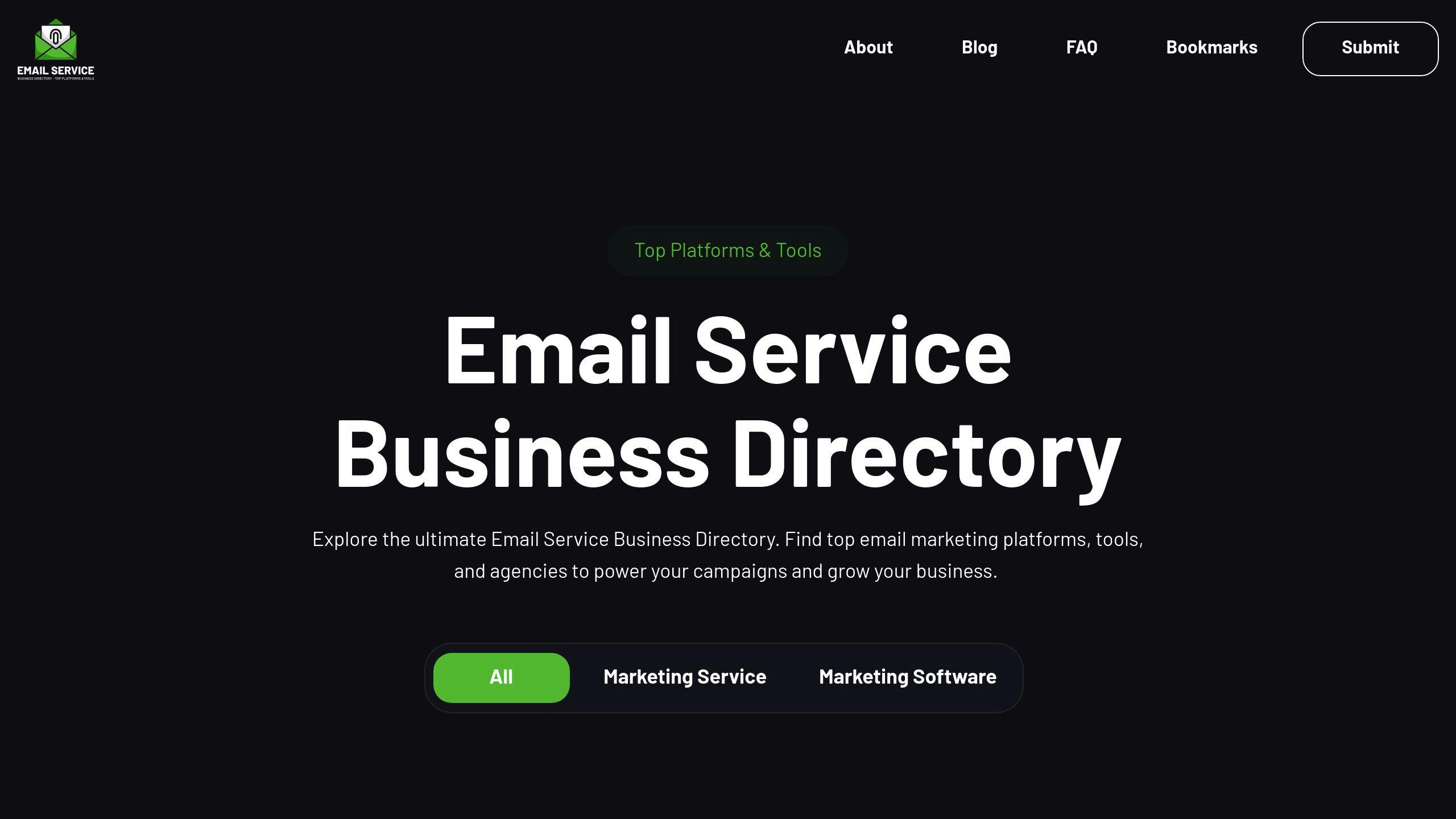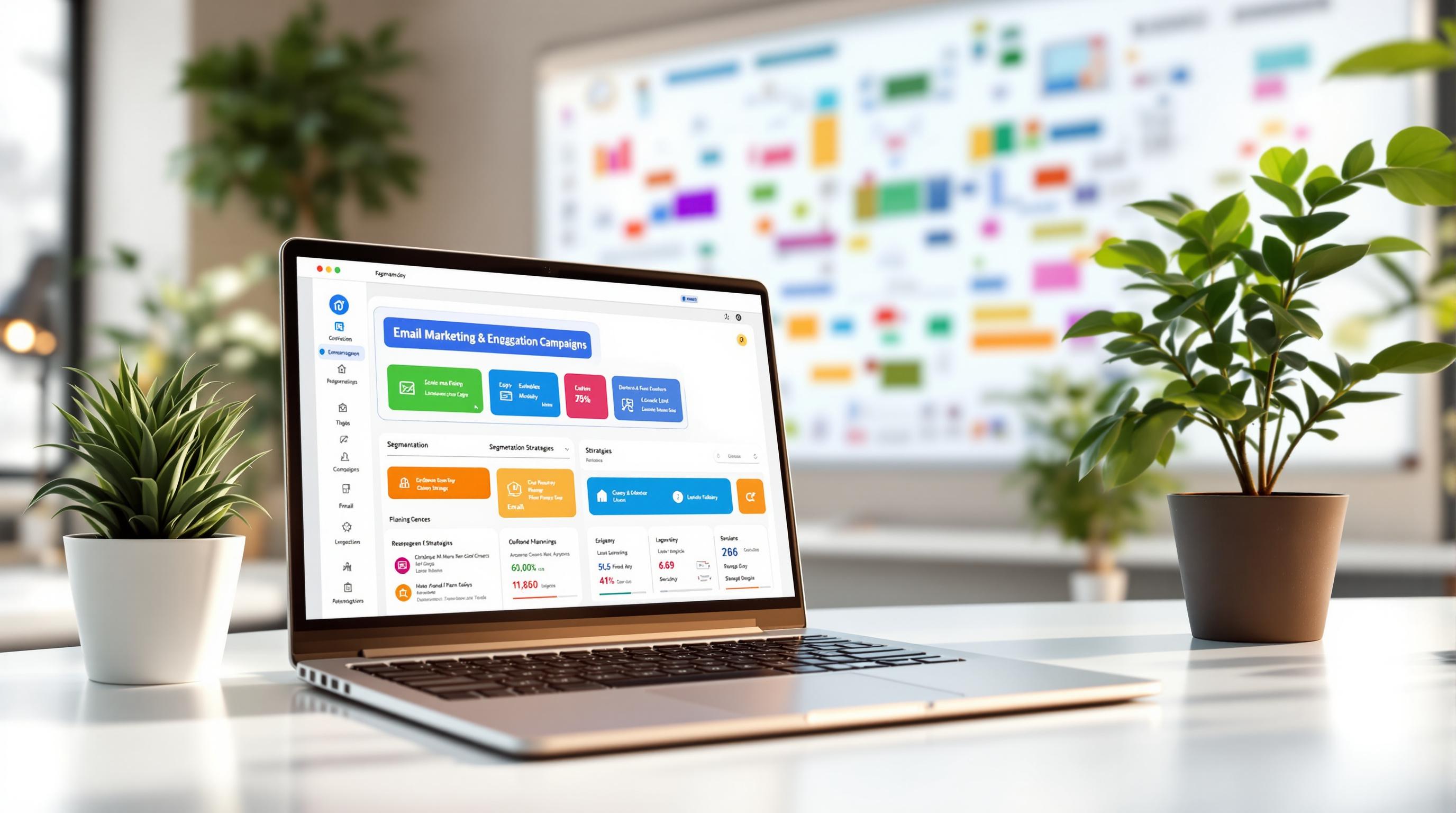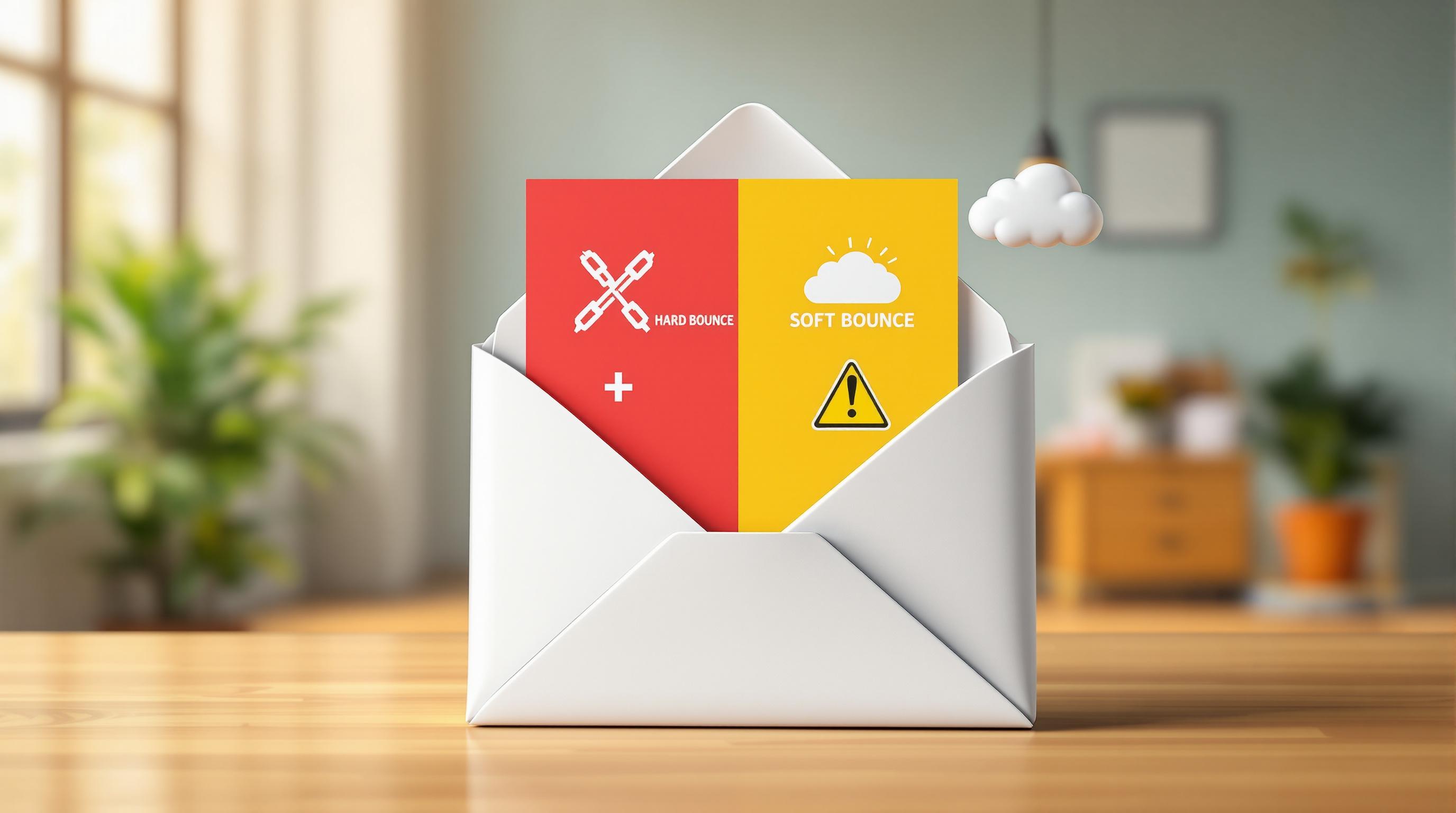Email marketing delivers an average ROI of $42 for every $1 spent, making it one of the most cost-effective channels in 2025. Here's what you need to know to maximize your results:
- Key Metrics: Track open rates (18.8% for retail), click-through rates (2.6%), and bounce rates (below 2%) to measure success.
- Industry Benchmarks: Retail leads with $45 ROI per $1 spent, followed by Marketing ($42) and Software ($36).
- Boost ROI: Use automation (30x higher returns), personalization (122% more ROI), and mobile-friendly designs to improve engagement.
- Cut Costs: Improve deliverability by cleaning email lists and using authentication protocols like SPF, DKIM, and DMARC.
Quick Tip: Automated workflows and segmented campaigns can significantly outperform generic strategies. Start optimizing today to stay ahead in 2025.
Email Marketing Benchmarks Report 2024: Analysis of 4.4 Billion Emails
Key Metrics to Measure Email Marketing ROI
Tracking the right metrics is key to understanding and improving your email marketing results in 2025. Let's break down the most important KPIs and cost-related metrics that influence your overall performance.
Important KPIs for Email Campaigns
Key performance indicators (KPIs) help you measure how well your email campaigns are doing. Here are the main ones to keep an eye on:
| Metric | What It Measures | Industry Average |
|---|---|---|
| Open Rate | Percentage of recipients who open your emails | 18.8% (Retail) |
| Click-Through Rate (CTR) | Percentage of users clicking on links in your emails | 2.6% (Retail) |
| Conversion Rate | Percentage of users completing desired actions | Varies by goal |
| Bounce Rate | Percentage of undeliverable emails | Should stay below 2% |
Personalized emails tend to perform much better, with 26% higher open rates and 122% more ROI compared to generic campaigns [3]. While these KPIs focus on campaign performance, it's just as important to monitor costs like Subscriber Acquisition Cost (SAC) to ensure you're getting the most out of your efforts.
Understanding Subscriber Acquisition Cost (SAC)
SAC measures how much it costs to gain a new subscriber. For instance, if a $100 campaign brings in 10 new subscribers, your SAC is $10 per subscriber.
SAC can vary by industry and has a direct impact on ROI:
Automated workflows often outperform single campaigns, delivering returns up to 30 times higher [1][3]. To effectively evaluate SAC, consider:
- The lifetime value of your subscribers
- Conversion rates specific to your industry
- How well email automation is implemented
- The quality and engagement of your email list
Email Marketing ROI Benchmarks for 2025 by Industry
Performance Metrics by Industry
Email marketing success varies greatly across industries in 2025. Here's a look at the current ROI benchmarks for key sectors:
| Industry | ROI | Average Open Rate | Click-Through Rate |
|---|---|---|---|
| Retail & E-commerce | $45 return for every $1 spent | 18.8% | 2.6% |
| Marketing & PR | $42 return for every $1 spent | 19.2% | 2.8% |
| Software & Tech | $36 return for every $1 spent | 20.8% | 3.1% |
| Media & Publishing | $32 return for every $1 spent | 17.5% | 2.4% |
Retail and e-commerce take the lead with the highest ROI. Campaigns like abandoned cart emails play a big role, boosting revenue by up to 20% [2]. On the B2B side, cold email campaigns are seeing reply rates between 10-15%, showing strong engagement [3].
Factors That Affect Benchmarks
Several elements influence how well email campaigns perform:
- List Size and Quality: Bigger lists can deliver higher ROI, but the real game-changer is having an engaged audience. Subscribers who interact with your emails drive conversions [1].
- Campaign Sophistication: Strategies like automated workflows, personalized messaging, and dynamic content can elevate performance. For example, dynamic content doubles the ROI of static emails, especially for marketing agencies [2]. Personalized campaigns can yield returns as much as 30 times higher than generic ones [1].
- Industry-Specific Trends: Trends and customer behaviors heavily impact results. Mobile optimization is a must - emails that aren’t mobile-friendly risk a 50% deletion rate. Meanwhile, automated sequences can boost send volume by 99% and open rates by 91% [4][5].
sbb-itb-6e7333f
Ways to Boost Email Marketing ROI in 2025
Improving Engagement with Mobile-Friendly Emails
Did you know that 61% of emails are opened on smartphones? This makes mobile optimization a must. Use email templates that adjust seamlessly to different screen sizes. Keep subject lines short - ideally between 30-40 characters - and ensure your calls-to-action are easy to tap. To keep things readable, stick to a minimum font size of 14px for body text.
Using Automation and Personalization
Automation and personalization are game-changers for email marketing in 2025. For example, Klaviyo reports that automated email flows generate an average of $1.94 per recipient, compared to just $0.11 for one-off campaigns [1]. Personalized emails? They deliver 122% higher ROI by using techniques like dynamic content and behavior-based triggers [3].
Here’s how different personalization strategies stack up:
| Strategy | ROI Impact | Implementation Complexity |
|---|---|---|
| Dynamic Content | 2x higher ROI | Medium |
| Behavioral Triggers | 3x higher ROI | High |
| List Segmentation | 1.5x higher ROI | Low |
Cutting Costs by Improving Deliverability
Want to cut costs? Start by improving deliverability. With bounce rates averaging 2.33% [4], cleaning your email lists is a good place to begin. Use double opt-in methods and set up authentication protocols like SPF, DKIM, and DMARC to protect your sender reputation. Keep an eye on engagement metrics to ensure your campaigns stay effective.
"Brands that incorporate A/B testing into their email program generate an ROI of 42:1, compared to an ROI of 23:1 for those who never test their emails" [2]
A/B testing is a powerful tool to fine-tune both deliverability and engagement. Combine these strategies with the right tools and providers, and you’ll be on track to maximize your email marketing ROI.
Resources and Tools to Improve Email Marketing
Discovering Providers with Email Service Business Directory

Choosing the right email marketing platform can have a huge impact on your return on investment (ROI). The Email Service Business Directory simplifies this process by offering a detailed overview of top email marketing solutions. Providers are grouped by specific needs, like e-commerce campaigns, customer retention, and lead nurturing, so you can quickly find tools that fit your goals.
When using the directory, compare provider features against industry standards to ensure they align with your performance targets. Pay attention to these key factors:
| Evaluation Criteria | Impact on ROI | What to Look For |
|---|---|---|
| Automation Capabilities | Boosts returns up to 30x | Advanced workflow builders |
| Integration Options | Cuts manual work by 65% | Compatibility with your current tech stack |
| Scalability Features | Supports future growth | Pricing that matches your growth plans |
| Analytics Tools | Better decision-making | Depth and customization in reporting |
Selecting the right tool is only the first step - understanding how its features enhance your campaigns is just as important for maximizing ROI.
How the Right Tools Improve Campaigns
A good email marketing tool does more than just send emails. It should offer features like advanced analytics, seamless integrations, and automation workflows that directly improve ROI. These tools help streamline targeting, reduce manual tasks, and reveal areas for improvement.
Automation is a major game-changer. Research shows that 66% of marketers expect email marketing ROI to grow [6], largely thanks to automation features.
For larger businesses, enterprise-level solutions can provide added benefits, such as a focus on high deliverability and integration with omnichannel marketing strategies - features that become essential as your campaigns expand.
Conclusion: Using Benchmarks to Improve ROI
Summary of Key Points
Email marketing remains a powerhouse in 2025, delivering an average ROI of 3600% to 3800% according to industry benchmarks [1][2]. Using these benchmarks effectively can help fine-tune campaigns and unlock better performance.
Sector-specific ROI benchmarks underline the importance of aligning strategies with industry trends. For example, Retail thrives with strong returns, while Media emphasizes segmentation. A tailored approach allows businesses to set practical goals and uncover opportunities that fit their market's needs.
Benchmarks act as a guide, showing where improvements are needed and where to focus efforts. The data highlights three main success factors:
- Strategic Execution: Engaging tactics like live content and customized messaging boost results.
- Adopting Technology: Automation simplifies workflows and enhances campaign outcomes.
- Enhancing User Experience: Personalization, automation, and mobile-friendly designs are essential for effective email marketing.
To improve ROI, businesses should:
- Compare their performance to benchmarks specific to their industry, not just general averages.
- Use industry trends to guide data-driven campaign updates.
- Regularly review and adjust strategies based on benchmark findings.


